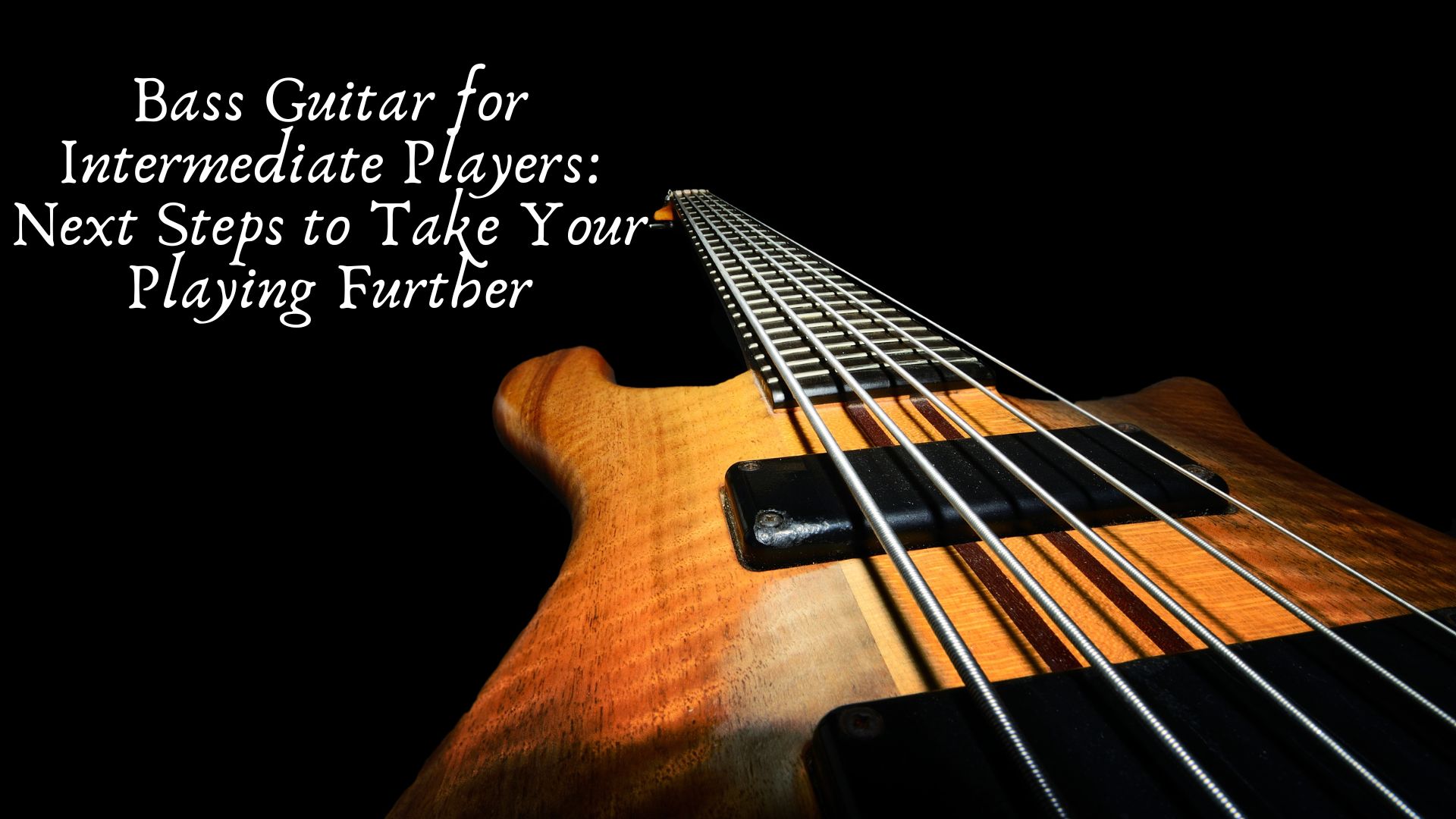Bass Guitar for Intermediate Players: Next Steps to Take Your Playing Further

The journey of learning the bass guitar doesn’t stop once you’ve mastered the basics. If you’re an intermediate player, you’re at a pivotal stage where your skills can grow exponentially with the right guidance and dedication. Transitioning from competent to confident involves exploring new techniques, expanding your musical vocabulary, and diving deeper into music theory. In this article, we’ll guide you through the essential next steps that will take your bass playing to the next level.
Understanding Where You Stand as an Intermediate Player
Before moving forward, it’s crucial to evaluate your current skill set. As an intermediate bassist, you likely:
-
Have a solid understanding of scales and basic music theory
-
Can play comfortably in a band or jam setting
-
Know how to groove in a variety of styles (rock, funk, pop, etc.)
-
Understand timing, rhythm, and locking in with the drummer
If that sounds like you, you’re ready to build on this foundation and push your playing to new heights.
Refine Your Technique
At the intermediate level, technique becomes even more critical. You’ve likely picked up habits—some good, some bad—that affect your sound and stamina.
Focus on these areas:
-
Finger Strength and Accuracy: Practice scales, arpeggios, and chromatic exercises with a metronome to build control.
-
Plucking Hand Techniques: Explore alternate plucking, raking, and palm muting. Introduce thumb plucking and hybrid techniques if you're interested in funk or slap.
-
Left-Hand Discipline: Minimize unnecessary finger movement, maintain proper hand positioning, and avoid excessive pressure on the fretboard.
Explore Advanced Techniques
Intermediate players should begin to explore more expressive and dynamic playing styles. These techniques not only diversify your skill set but also add flavor to your bass lines.
Some techniques to work on:
-
Slap and Pop: Learn the basics of slap bass (thumb slaps and popping) and study greats like Flea (Red Hot Chili Peppers) or Marcus Miller.
-
Hammer-ons and Pull-offs: Add smoothness and fluidity to your runs.
-
Tapping: For melodic and solo playing, tapping can open up a new world of sounds.
-
Ghost Notes and Muting: Essential for funk and R&B, ghost notes add rhythm and groove without overwhelming the mix.
Deepen Your Knowledge of Music Theory
Theory isn’t just for academics—it’s a tool that makes you a smarter, more versatile musician.
Key concepts to explore:
-
Modes: Understand how modes like Dorian, Mixolydian, and Phrygian affect the feel of a line.
-
Chord Tones and Arpeggios: These are the building blocks of melodic bass lines and solos.
-
Circle of Fifths: Learn key relationships and how to modulate between keys.
-
Harmonic Function: Know what role each note plays in a chord or progression.
Learning theory enables you to play with intention, improvise creatively, and communicate better with other musicians.
Start Transcribing by Ear
One of the best ways to improve is to learn directly from your musical heroes. Transcribing forces you to:
-
Improve your ear
-
Recognize patterns
-
Understand stylistic nuances
Start with simpler bass lines from classic records and work up to more complex arrangements. Use tools like Transcribe!, Amazing Slow Downer, or YouTube’s speed setting to aid the process.
Play with Other Musicians
Real growth often happens in a live setting. Whether it’s jamming with friends or joining a local band, playing with others:
-
Sharpens your timing and dynamics
-
Teaches you how to adapt in real time
-
Exposes you to different genres and styles
Look for open jam sessions, community bands, or online collaboration projects if in-person playing isn’t available.
Record Yourself Regularly
Recording is one of the best feedback tools you can use. It helps you:
-
Hear your timing and phrasing
-
Evaluate tone and dynamics
-
Track your progress over time
You don’t need a fancy setup—a smartphone or basic audio interface will do. Try covering songs, creating your own bass lines, or soloing over backing tracks.
Invest in Better Gear (If Necessary)
As you advance, your gear should support your evolving sound. Consider:
-
Upgrading your bass: Look for better pickups, electronics, or feel
-
Experimenting with pedals: A compressor, chorus, or envelope filter can expand your tonal palette
-
Better amplification: A quality amp brings out your tone more accurately
Don’t fall into the trap of thinking gear alone will make you better—but the right tools can definitely enhance your playing experience.
Take Lessons or Join a Masterclass
Even as an intermediate player, a good teacher can spot weaknesses, offer tailored exercises, and provide professional insight. Consider:
-
In-person or online private lessons
-
Subscription platforms like Scott’s Bass Lessons, JamPlay, or TrueFire
-
Workshops, clinics, and masterclasses by seasoned pros
Set Specific Musical Goals
Whether it’s mastering a song, recording an EP, or gigging with a band—goals give you a reason to practice. Define what success looks like for you and break it down into smaller steps:
-
“Learn 5 jazz walking bass lines in one month”
-
“Write and record one original bass composition by next month”
-
“Improve slap technique to play Level 42 or Victor Wooten pieces”
Tracking progress keeps you motivated and moving forward.
Conclusion
Reaching the intermediate level on bass guitar is a huge milestone—but it's also just the beginning of your musical adventure. By refining your technique, expanding your musical knowledge, and embracing new challenges, you’ll find yourself not just playing bass, but expressing yourself through it.
Every great bassist was once where you are now. Keep practicing, stay curious, and enjoy the process—because the next level is already within your reach.
- Art
- Causes
- Crafts
- Crypto
- Dance
- Drinks
- Defi
- Film
- Fitness
- Food
- Игры
- Gardening
- Health
- Главная
- Literature
- Music
- Networking
- Другое
- Party
- Religion
- Shopping
- Sports
- Theater
- Wellness

